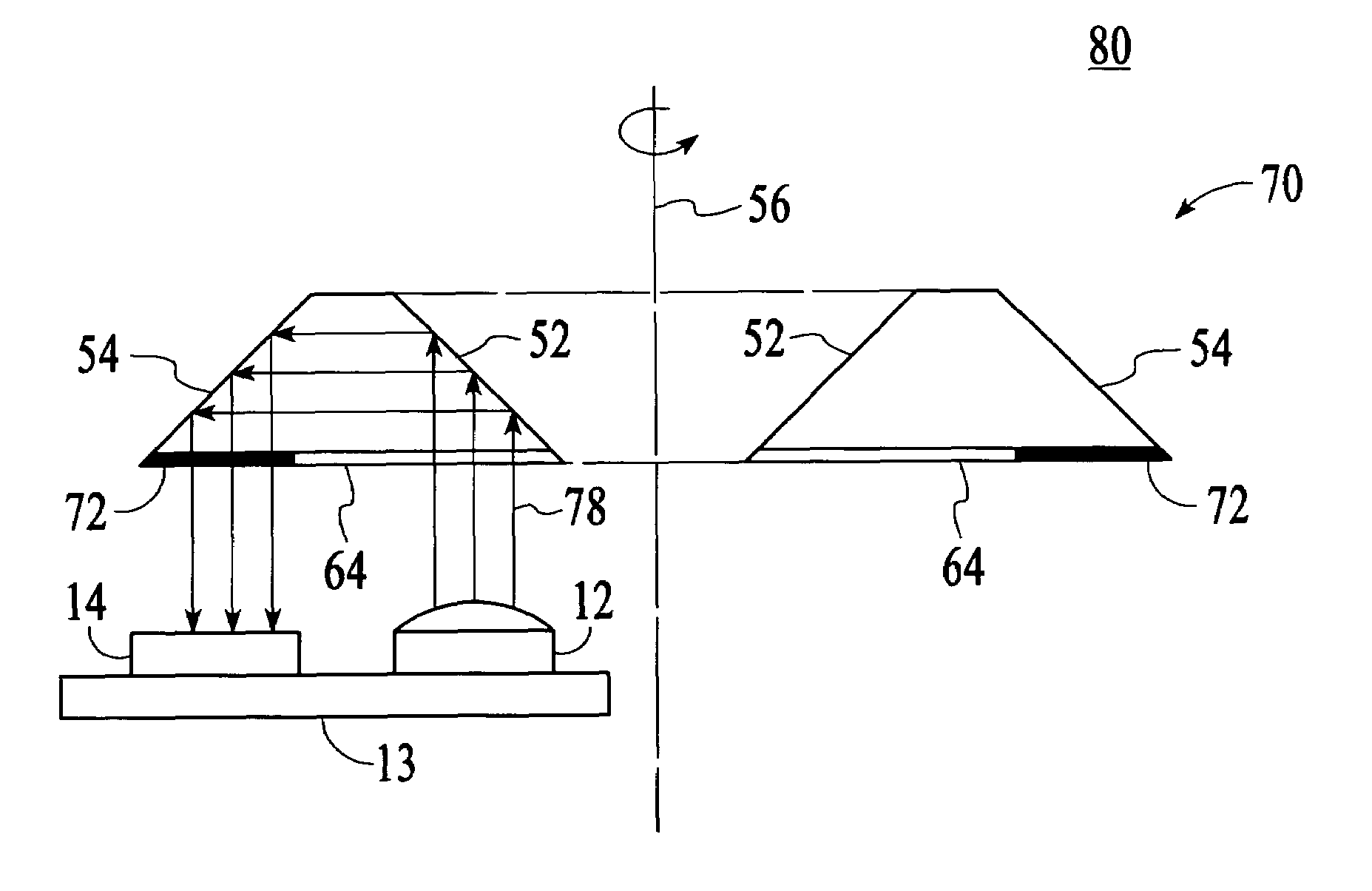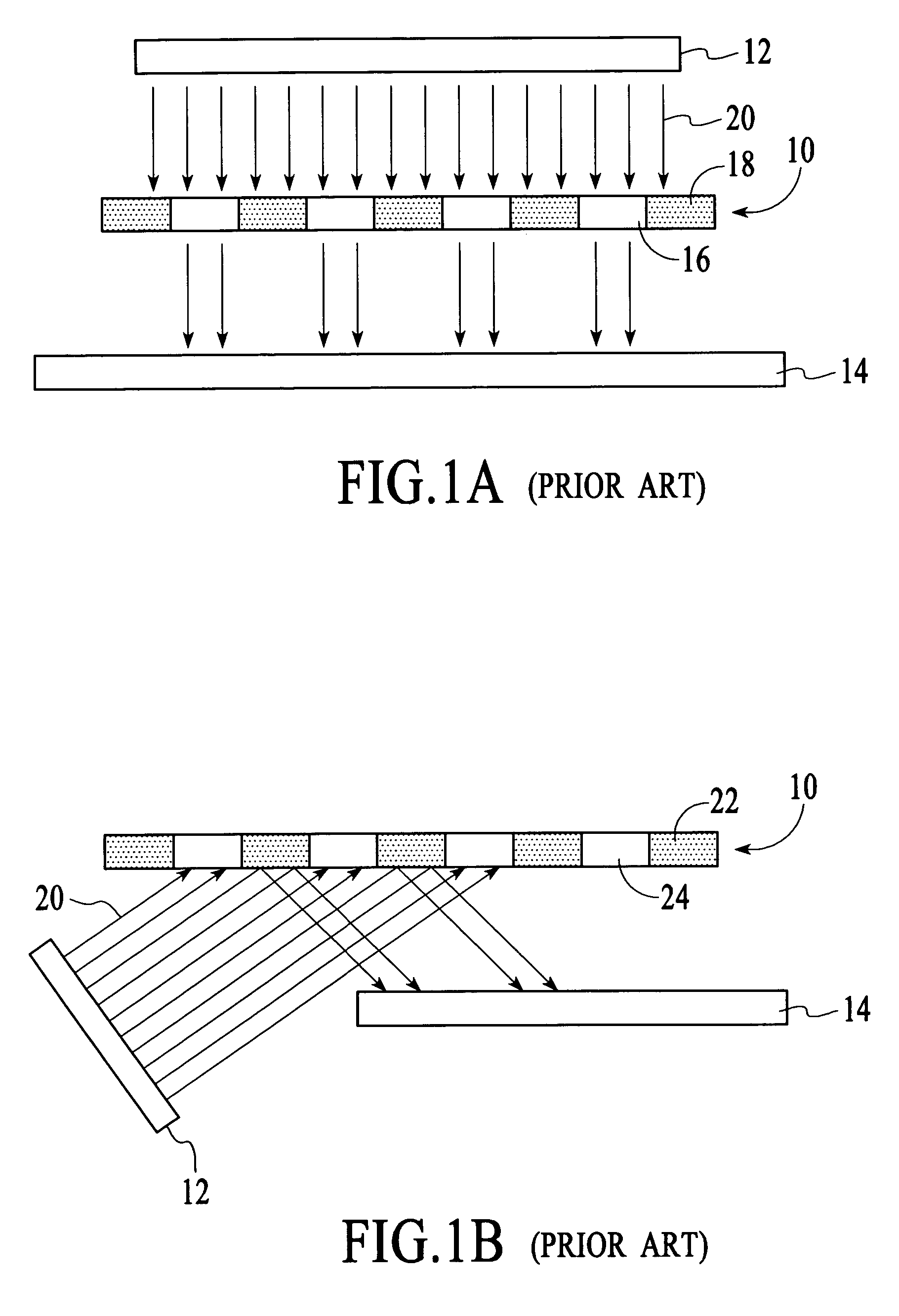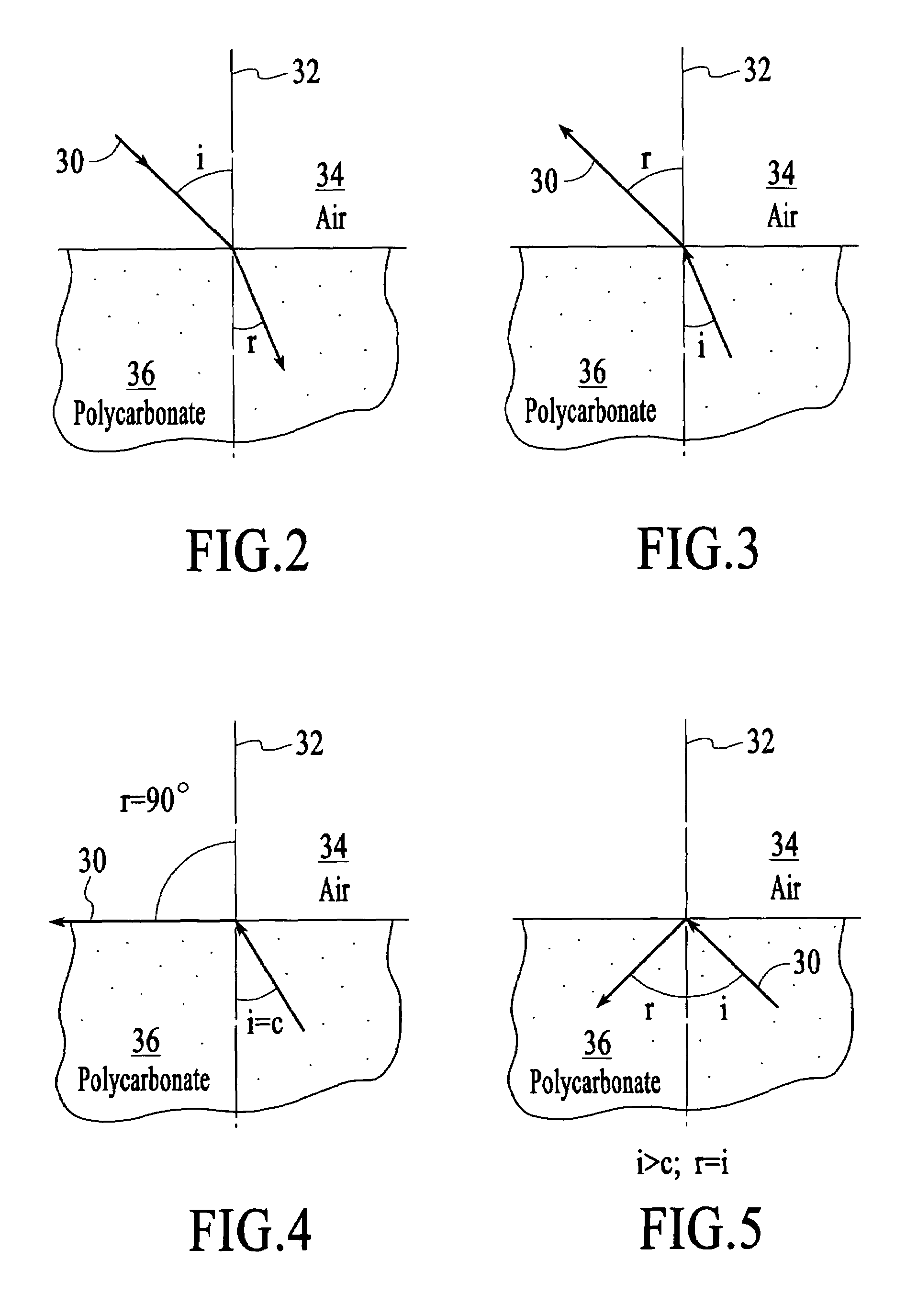Optical encoding that utilizes total internal reflection
an optical encoding and internal reflection technology, applied in the field of optical encoding that utilizes total internal reflection, can solve the problems of limiting the profile dimension low signal, restricting the speed and resolution of the encoding system, etc., and achieves a small profile dimension. , good contrast
- Summary
- Abstract
- Description
- Claims
- Application Information
AI Technical Summary
Benefits of technology
Problems solved by technology
Method used
Image
Examples
Embodiment Construction
[0022]Total internal reflection (TIR) is a special phenomenon in optical refraction. When light travels from a low-density medium to a high-density medium, for example, from air to polycarbonate, it will refract towards the normal plane of the intercept point. FIG. 2 depicts the refraction of light 30 towards the normal plane 32 of the intercept point when light travels from a low-density medium 34 (e.g., air, with a refractive index of 1) to a high-density medium 36 (e.g., polycarbonate, with a refractive index of n). In FIG. 2, the light travels in air at an angle, i, relative to normal and then travels in the polycarbonate at an angle, r, relative to normal. The relation of the two angles, i and r, is governed by Snell's law as:
[0023]sinisinr=n
[0024]When light travels instead from a high-density medium 36 (e.g., polycarbonate) to a low-density medium 34 (e.g., air), the light 30 refracts away from the normal plane. FIG. 3 depicts the refraction of light away from the normal p...
PUM
 Login to View More
Login to View More Abstract
Description
Claims
Application Information
 Login to View More
Login to View More - R&D
- Intellectual Property
- Life Sciences
- Materials
- Tech Scout
- Unparalleled Data Quality
- Higher Quality Content
- 60% Fewer Hallucinations
Browse by: Latest US Patents, China's latest patents, Technical Efficacy Thesaurus, Application Domain, Technology Topic, Popular Technical Reports.
© 2025 PatSnap. All rights reserved.Legal|Privacy policy|Modern Slavery Act Transparency Statement|Sitemap|About US| Contact US: help@patsnap.com



